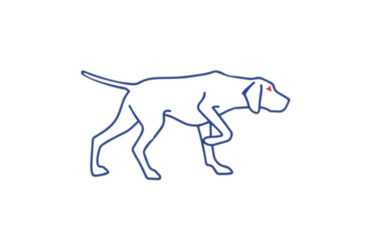Introduction to Microwave Links
Microwave links, a vital component of modern telecommunication networks, have become increasingly prevalent in connecting remote areas, supporting mobile networks, and facilitating high-speed data transmission. Operating within the frequency range of 2 to 58 GHz, these links serve as a bridge for various communication purposes, from broadcasting television signals to providing internet connectivity.
One of the standout features of microwave links is their high tolerance against interference. In a world where the electromagnetic spectrum is becoming increasingly crowded, this ability to resist interference from other signals is crucial. It ensures that the transmitted data remains pure and uncorrupted, providing a reliable communication channel.
Alongside this, microwave links exhibit a high tolerance against deep fading, a phenomenon where the signal strength decreases significantly over a short distance. Deep fading can be a major challenge in wireless communication, leading to loss of connection or degraded quality. Microwave links, with their robust design and technology, can overcome this challenge, ensuring that the signals reach their destination without significant loss in strength.
The high signal carrying capacity of microwave links is another remarkable feature. With the ability to carry data ranging from 2 to 155 Mbps, they can support a wide variety of applications, from simple voice communication to high-definition video streaming. This flexibility makes them suitable for diverse needs, whether in urban areas with high data demands or in remote locations where basic connectivity is a priority.
Ease and speed of installation are also key advantages of microwave links. Unlike traditional wired connections that require extensive infrastructure and can be time-consuming to set up, microwave links can be deployed rapidly. This not only reduces the cost but also enables quick response to changing communication needs. In disaster-stricken areas or temporary event venues, microwave links can be a lifeline, providing immediate connectivity when it’s needed most.
Furthermore, the broad frequency range of microwave links allows for a variety of applications across different distances. Long-haul links cover distances from 45 to 80 km, medium-haul links range from 20 to 40 km, and short-haul links cover shorter distances. This classification based on frequency and distance adds another layer of versatility to microwave links, making them suitable for different scenarios and requirements.
In conclusion, microwave links represent a sophisticated and adaptable technology that plays a pivotal role in contemporary communication systems. With their high tolerance against interference and deep fading, substantial signal carrying capacity, and quick and economical installation, they offer a compelling solution to the ever-growing and diverse communication needs of our time. Whether connecting a remote village to the outside world or supporting the data-intensive demands of a bustling city, microwave links stand as a testament to human innovation and the relentless pursuit of connectivity.
Classification of Microwave Links
Microwave links can be classified into three main categories based on their frequency range and the distance they cover:
- Long Haul (2–10 GHz)
- 2 GHz Band: Max path length 80 km, multipath fading, antenna diameters up to 370 cm, both vertical and horizontal polarizations.
- 7 GHz Band: Max path length 50 km, multipath fading, antenna diameters up to 370 cm.
- 10 GHz Band: Max path length 45 km, multipath fading, antenna diameters 60–120 cm.
- Medium Haul (11–20 GHz)
- 13 GHz Band: Max path length 40 km, multipath and rain fading, antenna diameters 60–120 cm.
- 15 GHz Band: Max path length 35 km, multipath fading, antenna diameters 60–120 cm.
- 18 GHz Band: Max path length 20 km, rain and multipath fading, antenna diameters 60–180 cm, atmospheric attenuation 0.1 dB/km, attenuation due to rain about 1 dB/km.
- Short Haul (23–58 GHz)
- 23 GHz Band: Max path length 18 km, rain and multipath fading, antenna diameters 30–120 cm, atmospheric attenuation 0.1 dB/km, attenuation due to rain about 3 dB/km.
- 26 and 27 GHz Bands: Max path length 15 km, rain fading, antenna diameters 30–60 cm, atmospheric attenuation 0.1 dB/km, attenuation due to rain about 3 dB/km.
Key Considerations in Microwave Link Planning
- Frequency Selection
Frequency selection is a critical step in microwave link planning. The frequency band chosen must align with the distance requirements, environmental conditions, and regulatory constraints. Different frequency bands have varying characteristics, such as propagation behavior, susceptibility to interference, and licensing requirements.
Formulation: Frequency Selection = f(Distance, Environment, Regulations)
Example: For a long-haul link covering 50 km, a frequency band of 7 GHz might be selected, considering factors like multipath fading and regulatory permissions.
- Antenna Selection
Antenna selection involves choosing the appropriate size, type, and gain to meet the link requirements. The antenna’s characteristics must align with the frequency band, distance, and environmental conditions. A higher gain antenna can provide better signal strength but may be more susceptible to alignment issues.
Formulation: Antenna Selection = f(Frequency, Distance, Environment)
Example: For a medium-haul link at 15 GHz, an antenna with a diameter of 60 cm and a gain of 38 dB might be chosen.
- Polarization
Polarization refers to the orientation of the electromagnetic wave. Utilizing both vertical and horizontal polarizations can optimize the link by reducing interference and maximizing capacity. Dual polarization can be used to transmit separate signals simultaneously.
Formulation: Polarization = f(Interference, Capacity Requirements)
Example: A link operating at 23 GHz may use both vertical and horizontal polarizations to achieve a gain range of 35.5–47.3 dB.
- Fading Considerations
Fading considerations involve understanding the impact of multipath and rain fading on the link performance. Multipath fading occurs when signals take multiple paths, causing interference. Rain fading affects higher frequencies and can cause signal attenuation.
Formulation: Fading Considerations = f(Frequency, Distance, Weather)
Example: In a short-haul link at 26 GHz, rain fading might be a significant concern, requiring additional mitigation strategies.
- Path Length Calculation
Explanation (400 words): Path length calculation involves determining the maximum distance the signal can travel based on the frequency band, antenna characteristics, and environmental factors. It’s essential to ensure that the link operates within its optimal range.
Formulation: Path Length Calculation = f(Frequency, Antenna, Environment)
Example: For a frequency band of 18 GHz, the maximum path length might be calculated as 20 km.
- Line of Sight (LOS) Check
Line of Sight (LOS) check is a critical aspect of microwave link planning that ensures there are no obstructions between the transmitting and receiving antennas. This involves a comprehensive analysis of the terrain, buildings, trees, and other potential obstacles that could hinder the signal transmission.
A clear LOS is vital for optimal signal transmission, as any obstruction can cause signal attenuation, reflection, or diffraction, leading to poor link performance. The LOS check is not only about visual inspection but involves detailed calculations and simulations using topographical data and Fresnel zone analysis.
The Fresnel zone is an elliptical region between the transmitting and receiving antennas, and it must be kept free from obstructions for the signal to travel without interference. The formulation for calculating the radius of the Fresnel zone (R) at any point P between the antennas is given by:
Where:
- n is the Fresnel zone number (usually 1 for the first Fresnel zone)
- λ is the wavelength of the signal
- 1d1 and 2d2 are the distances from point P to the transmitting and receiving antennas, respectively
Example:
Consider a microwave link operating at 5 GHz with transmitting and receiving antennas 10 km apart. If we want to check the first Fresnel zone clearance at the midpoint (5 km from each antenna), the radius of the Fresnel zone would be:

This calculation ensures that no obstacle within 0.34 meters of the direct line between the antennas will interfere with the signal.
For a practical and efficient LOS check, tools like TTG’s Rapid Link can be invaluable. Rapid Link is designed to simplify and automate the LOS check process, providing accurate assessments and visualization of the link path. By leveraging advanced algorithms and GIS data, Rapid Link can quickly identify potential obstructions and suggest optimal antenna placement, ensuring a clear and reliable microwave link.
In conclusion, the LOS check is an essential step in microwave link planning, and tools like Rapid Link offer a streamlined and precise approach to this critical task. By ensuring a clear path between the transmitting and receiving antennas, the LOS check lays the foundation for a robust and efficient microwave link.
- Link Budget Calculation
Link budget calculation involves accounting for all gains and losses in the system. It includes factors like antenna gain, cable loss, atmospheric conditions, and more. A positive link budget ensures that the signal strength at the receiving end is sufficient.
Formulation: Link Budget = Transmitter Power + Antenna Gain – Losses
Example: A link with a transmitter power of 30 dBm, antenna gain of 40 dB, and total losses of 50 dB would have a link budget of 20 dB.
- Interference Calculation
Interference calculation assesses the impact of other signals and noise sources on the link. It’s vital for ensuring that the link operates without disruption. Interference can come from other microwave links, electronic devices, or natural sources.
Formulation: Interference Calculation = f(Nearby Signals, Noise Sources, Frequency)
Example: In a densely populated area with multiple microwave links, a detailed interference analysis might be required to select the optimal frequency and polarization.
These key considerations provide a comprehensive framework for microwave link planning, ensuring optimal performance, reliability, and efficiency.
Conclusion
Microwave link planning is an intricate and vital process in the field of telecommunications. It encompasses various factors such as frequency selection, antenna selection, polarization, fading considerations, path length calculation, Line of Sight (LOS) check, link budget calculation, and interference calculation. The careful orchestration of these elements ensures the optimal performance and reliability of microwave links, serving as the backbone for diverse communication applications.
The emergence of 5G technology adds a new dimension to microwave link planning. As 5G aims to provide higher data rates, lower latency, and more robust connectivity, it demands a reevaluation of traditional microwave link planning strategies. The higher frequency bands used in 5G may require more precise alignment and consideration of environmental factors, such as rain and multipath fading. The integration of 5G technology with existing microwave links also necessitates a careful analysis of interference and compatibility.
5G technology also opens up opportunities for enhanced microwave link planning. The utilization of advanced modulation schemes, beamforming, and MIMO (Multiple Input Multiple Output) technologies can further optimize microwave links, aligning them with the high-performance requirements of 5G networks. The synergy between microwave links and 5G technology can lead to more efficient spectrum usage, improved link resilience, and the ability to support new applications and services.
In conclusion, microwave link planning is a complex yet essential task that shapes the landscape of modern communication. The advent of 5G technology not only challenges traditional practices but also offers exciting possibilities for innovation and growth. By understanding the interplay between microwave link planning and 5G technology, engineers and professionals can design and deploy systems that meet the evolving needs of our connected world. The future of communication is poised at the intersection of these technologies, and the industry’s ability to adapt and innovate will determine the path forward.


